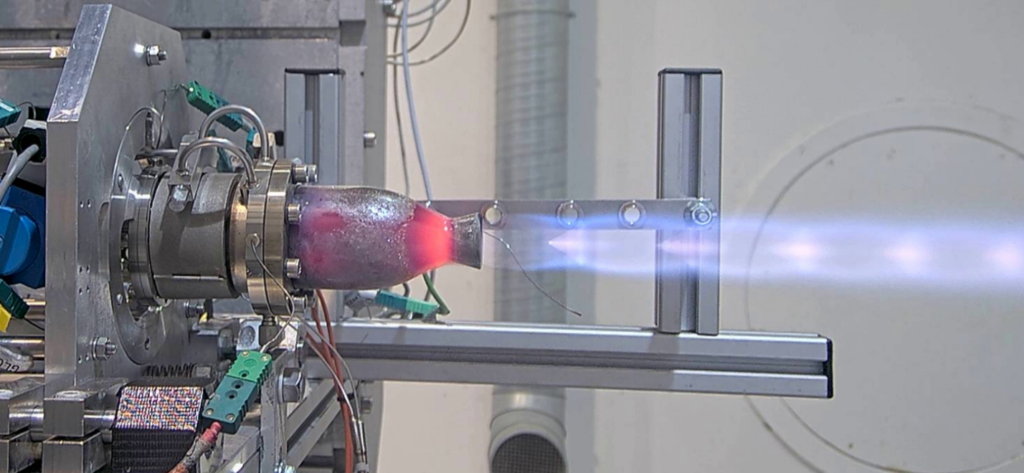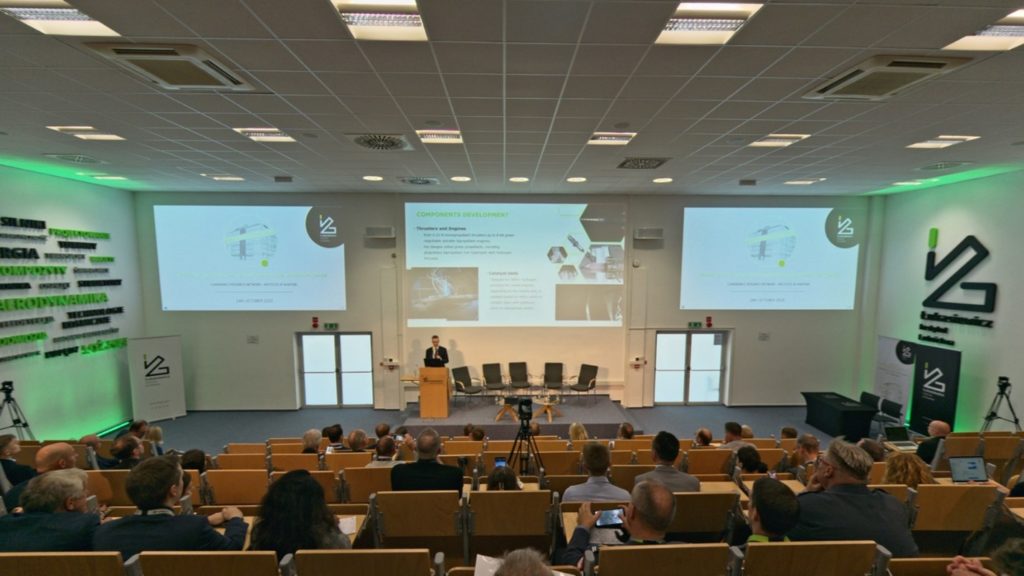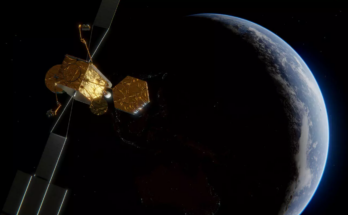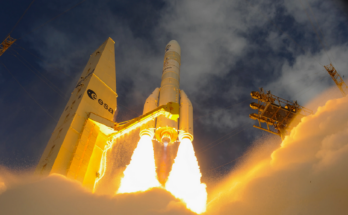by Carter Palmer and Derek

The Łukasiewicz Institute of Aviation held the grand opening of its new rocket and satellite propulsion laboratory on October 24, three years after work got underway to build the new facilities at the research institute’s Warsaw campus.
The purpose of the facility is to produce High-Test Peroxide (HTP) that has a concentration of over 98%. Higher purities can also be attained. Furthermore, the facility is developing engines and components to utilize HTP. The goal is to produce “green” propellants, both liquid and solid, which can be used within the Space industry. There are a few products under development by the Institute including a green bipropellant thruster, a green liquid apogee engine, green upper stage propulsion and deep-throttling green propellant engines for landers and reusable rocket stages. This facility will also develop qualified rocket propulsion systems, as well as rocket control and monitoring systems.

Along with the grand opening of the new laboratory, the institute held a panel discussion centering on green propulsion for in-space flight, led by the institute’s Director of Space Technologies Center, Dr. Adam Okniński, and including speakers from the Polish and European Space Agencies, as well as from European businesses.
Much of the talk focused on the challenges and opportunities involved with using HTP in the context of space. It is a nascent technology that is safer for personnel to work with and cleaner for the environment than the materials currently in use. There are a lot of applications to these technologies, particularly when it comes to space transport. Civil and military operators in Space could utilize this green technology, which is more environmentally-friendly than legacy chemicals such as hydrazine.


The panelists also touched on the subject of electric propulsion, and all seemed in agreement that the technology will complement rather than replace chemical propulsion, enabling a space vehicle to use either at will depending on the circumstance. Electric propulsion is ideal for low-thrust use.
Market demand is still forming, which can be a challenge for small industry players that want to get involved. One of the panelists, Dr. Michał Wierciński, the vice president of the Polish Space Agency, noted that European cooperation is the key to advancing space projects. Individual markets may be too small, but the combined European market offers numerous opportunities both for established firms and newcomers to collaborate or obtain funding. This is where the Łukasiewicz – Institute of Aviation becomes a crucial node in the European space industry, with the experience and facilities to support local companies.
The proof is in the pudding – to close the panel talk, the Łukasiewicz Institute of Aviation inked a memorandum of understanding with The Exploration Company, whose CEO, Hélène Huby, was part of the panel. The Exploration Company’s product, Nyx, is a reusable space vehicle designed to carry cargo and eventually humans from point to point.
With the new facilities, the researchers at the institute have access to specialized instruments that enable components to be tested in a vacuum, mimicking the environment of space. The institute will be able to advance research into orbit correction, spacecraft orientation control, long-distance space missions, and even planetary landings. The first humans on Mars might one day be landing in a craft utilizing this ground-breaking fuel and rocket engine.





